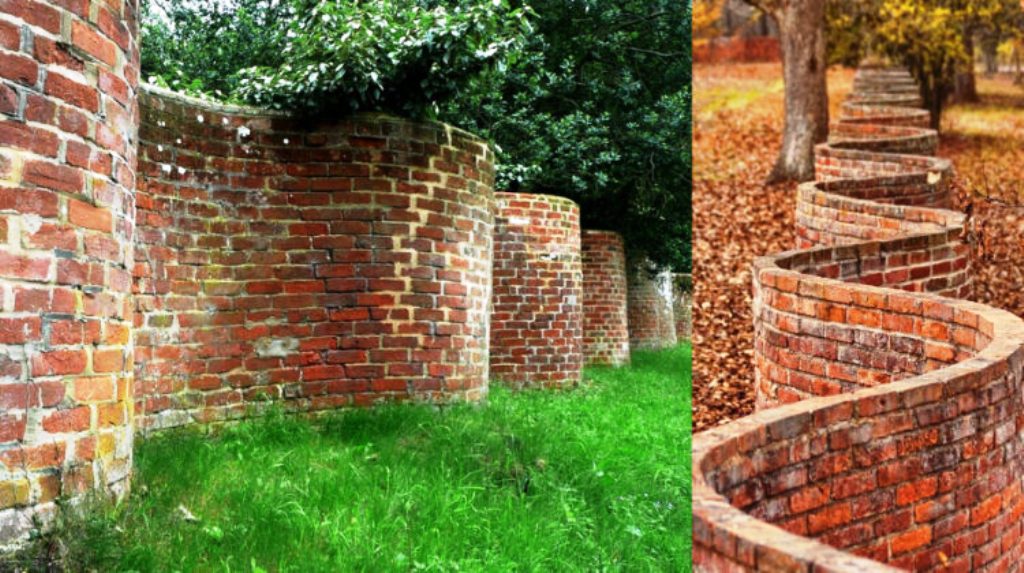Britain has a lot of endearing aspects. Afternoon tea with biscuits (do you apply marmalade or clotted cream first?). Walks through enigmatic and beautiful gardens and parks. Wall swells. What are wavy walls? Wave-like walls.
Wavy walls have spread to other nations, including the United States, after becoming famous in the United Kingdom. Crinkle crankle garden walls, how much do you like that name? are significantly less expensive than straight walls because they use fewer stones altogether. Like us, you probably thought at first, “That doesn’t make any sense!” Wavy walls use fewer bricks altogether because they can be one block thick. Straight walls would fall if they were only one block broad. All of the angles on the wall add to its support.



Wavy walls are beautiful and useful for growing fruit plants in alcoves and protecting your yard. (if it ever comes to that)

“I was trying to find something uniquely Suffolk for a local writing competition in 2015 when I happened across crinkle-crankle walls,” Ed said of his foray into the serpentine world.
“I read on several websites that Suffolk, where I live, had more than 50 instances, but the original list, which local historian Norman Scarfe started compiling in the 1960s, had vanished.” Since then, I’ve been working on compiling my own roster. I’ve been to over 100 so far, and every time I believe I’m finished, another one emerges.



Ed informed Bored Panda that new wavy barriers are still being built in the UK. “From individual projects (such as one at Ashbocking, built in 1999) to those sprinkled throughout new estates (such as those in a new development at Lavenham by architects Wincer Kievenaar) where they’re added as a nod to the local Suffolk style,” he said.



“However, older ones may require maintenance or repair as well, particularly if driven into by a passing car.” (as happened at Easton in 2013). Some do not survive due to the high expense of a thorough repair.”
Connoisseur of crinkle crankle Ed added that serpentine walls have the benefits of using fewer stones, being perfect ‘hot walls’ for producing soft fruit in the concave alcoves, and giving you “bragging rights over your neighbor!”



Wavy walls, also known as crinkle crankle walls, go by a variety of titles, the majority of which would appeal to Draco Malfoy. Crinkum crankum, serpentine, and ribbon walls are other names for them. Wavy walls were used to produce food in 18th century England. That’s why they were typically constructed East to West, with one side always facing South to receive the sun’s warming beams.



Many crinkle crankle walls can be found in East Anglia, where Dutch architects cleared the Fens marshes in the 17th century. These architects are believed to be the first to construct serpentine barriers in the United Kingdom. The Dutch named them slangenmuur, or serpent walls, back then.
Serpentine barriers, on the other hand, aren’t just for landscaping. They also provide practical benefits when protecting against intruders. Because of their undulating form, assaulting soldiers would be compelled to break ranks, making them susceptible to defender counterstrikes. Something to think about if your yard is ever overrun by fruit thieves or cunning squirrels.
This is what people had to say about the serpentine barriers that became famous in the United Kingdom.










